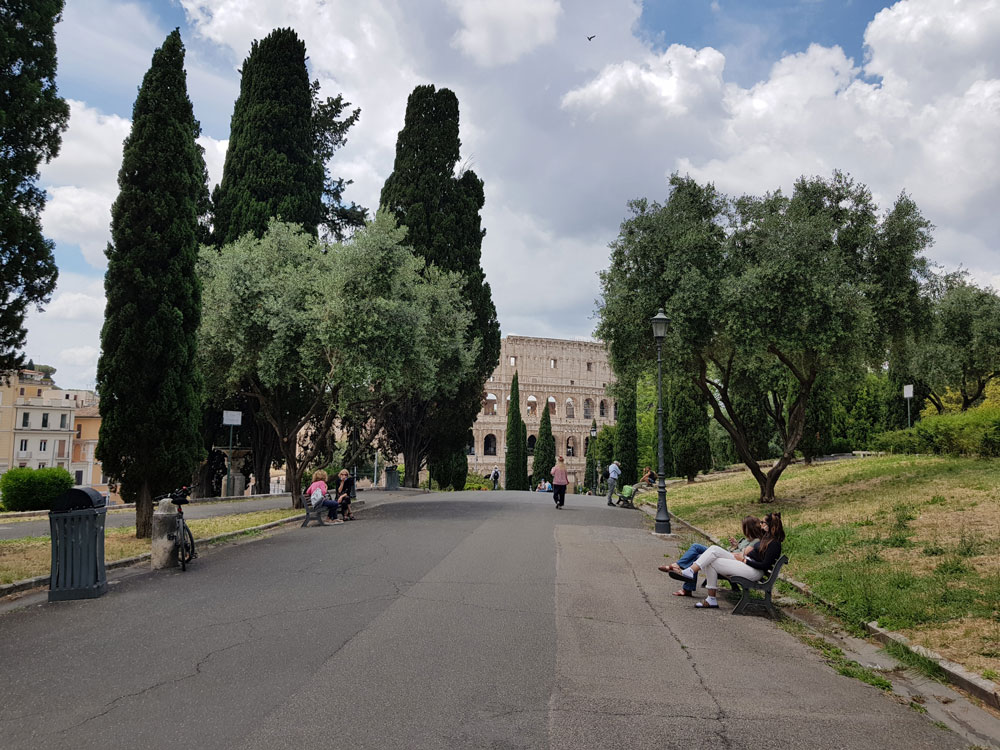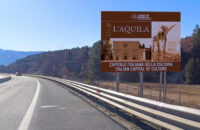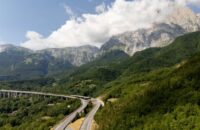Raffaele De Vico, born in the ancient capital of the Vestini, Penne, on April 18, 1881, left an indelible imprint on the urban landscape of Rome, transforming the city with his gardens, which are still admired today. His education, which began at the Technical Institute in Chieti and was completed at the Academy of Fine Arts in Rome, fused the authenticity of his homeland with the elegance of the capital.
The son of Angelo, a talented Pennese sculptor close to the Macchiaioli, after his Roman studies and an apprenticeship with Marcello Piacentini, he began his long and fruitful collaboration with the City of Rome, culminating in his directorship of the Public Green Office. His vision, which combined aesthetics and functionality, gave rise to iconic green spaces such as the Colle Oppio Park, the Orange Garden, and the Virgilian Park. His ability to shape the urban landscape, with an eye for nature and scenic details, established him as one of the leading architects and landscape architects of his generation.
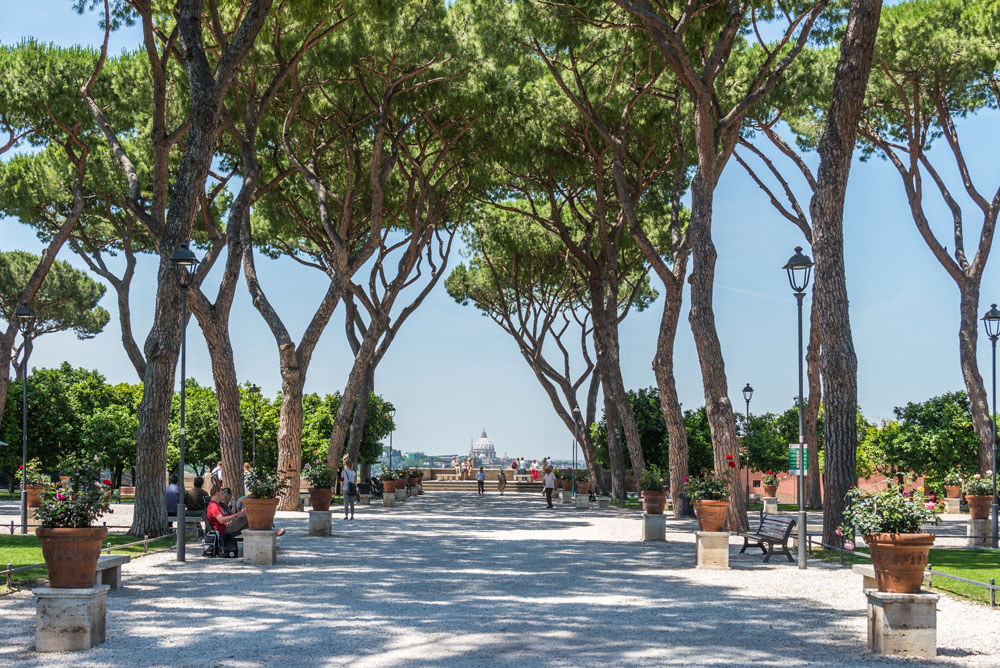
Rome’s gardens: a green legacy that continues to flourish
De Vico’s Roman gardens, true masterpieces, testify to his genius, his attempt to ferry the tradition of the “Italian garden” to the needs of a modern metropolis. Each green space, with its own peculiarities, reflects his vision of a harmony between architecture and nature. His connection with Abruzzo is manifested in his use of natural materials, such as stone. His work, characterized by a balance between aesthetics and functionality, has transformed the face of the Eternal City.
De Vico has created some of the most beautiful parks in Rome, including:
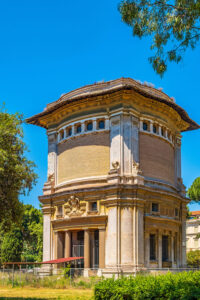 The Park of Colle Oppio: a green oasis with gardens and fountains, designed by De Vico between Via Labicana and Via Maecenas, offering spectacular views of the Colosseum.
The Park of Colle Oppio: a green oasis with gardens and fountains, designed by De Vico between Via Labicana and Via Maecenas, offering spectacular views of the Colosseum.
Villa Borghese Park: in the immense and ancient park, full of gardens, museums and fountains, De Vico designed, among other things, the artistic Water Reservoir that can be admired in the Deer Park.
The Garden of Oranges: De Vico redesigned this enchanting place on the Aventine by providing the main entrance off axis of symmetry, thus surprising the visitor suddenly with a breathtaking view of Rome and the “Dome,” in a typically Baroque device.
The Gardens of Via dei Fori Imperiali: scenically overlooking the grand ruins of ancient Rome, which he decided to have framed by majestic Italic pines.
EUR Waterfall Garden: the central garden of the EUR district adorned with a series of scenic waterfalls.
The Park of Remembrance at Villa Glori: where the Architect has declined the aesthetics of the romantic garden.
Virgilian Park: entirely designed by him on Via Nemorense, near the Salaria.
Mazzini Square: where the Master made a splendid fountain that adorns the square.
And more: the Garden of Monte Sacro, the reconstruction of the Theater of Ostia Antica, the Garden of Piazza Verbano, the Park of Villa Fiorelli at Tuscolano, the Gardens of Villa Caffarelli on the Capitoline Hill, Villa Sciarra and Villa Paganini, Dante’s Park at Monte Mario, the Memorial to the Fallen of World War I in the Verano Cemetery, the Rose Garden of Rome…countless are the green spaces designed by the Master and still experienced by Romans and tourists of the third millennium. These gardens, testimony to his genius, are places of beauty and harmony, where nature and architecture merge into a single work of art.
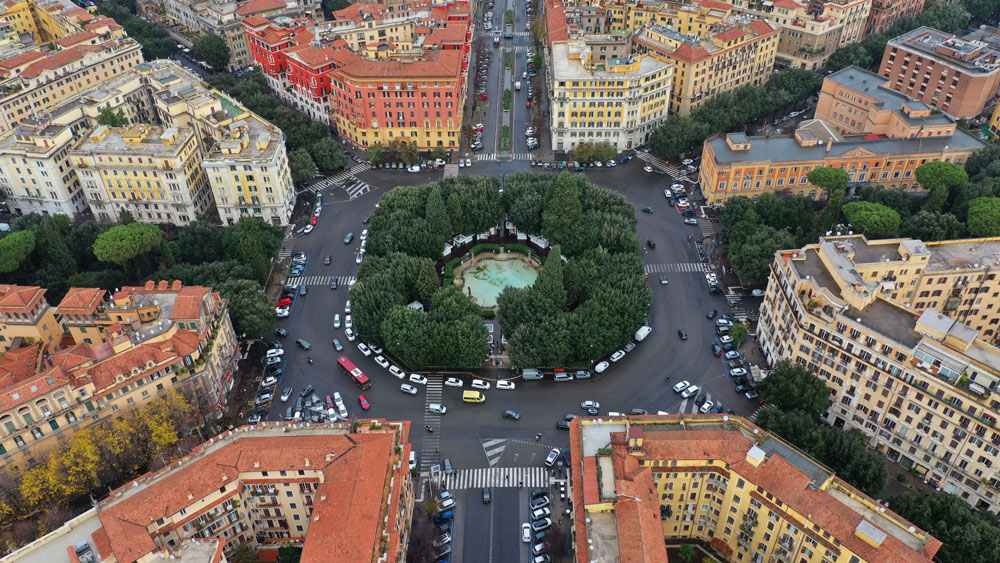
Acknowledgements and remembrance: two monographs to remember him
The importance of Raffaele De Vico has recently been celebrated in two publications, “Raffaele De Vico. Architect and Landscape Architect,” published by Romarchitettonica, the series dedicated to the architects of the City of Rome, and “Raffaele De Vico and the Gardens of Rome,” a monograph published in 2022 edited by his nephew Massimo De Vico Fallani and enriched with historical articles, documents and family memoirs. An exhibition dedicated to him organized in 2018 at Palazzo Braschi paid tribute to his genius.
A plaque on the wall of the Casino del Graziano in Villa Borghese, next to the entrance to the Biopark, reminds us that the Architect of Penne lived here, in the midst of his gardens, from 1920 until his death, which occurred in 1969.
At 100 years old, the San Sisto Orangery is reborn, a symbol of the future
L’Orangery of the Park of San Sisto, designed by De Vico in 1926 between Porta Metronia and the Baths of Caracalla, is these days undergoing a major restoration that aims at energy efficiency, with an investment of more than 4 million euros by the City of Rome. The project involves the installation of glass modules with transparent amorphous silicon, which respect the original design of the glass roof, capable of powering a photovoltaic system. Through the integrated use of state-of-the-art passive and active energy strategies and the complete insulation of the envelope, the building will reduce energy needs by 75 percent, producing more energy than it consumes. The excess energy will be fed into the grid to power lighting in the park and surrounding buildings.
The redevelopment also includes an air purification system through four “Air Factories,” shrines filled with leafy degree plants equipped with a phyto-purification system that amplifies the plants’ ability to imprison and degrade pollutants. Air conditioning will be achieved with “Canadian Well” geothermal technology : 20 underground conduits will exchange air temperature with that of the ground. In addition, an integrated gutter system has been included to recover and recycle rainwater for irrigation of the park’s indoor and outdoor plants.
A candidate for LEED level gold certification, the Orangery will be a zero-emission building, an exemplary case study for energy-saving restoration of historic buildings. 100 years after its construction, the Orangery confirms that Raffaele De Vico was a pioneer, able to anticipate issues such as sustainability and harmony with nature and landscape, which are more relevant today than ever. His work, a bridge between Abruzzese tradition and Roman innovation, continues to inspire and make Rome a greener, more livable city.
